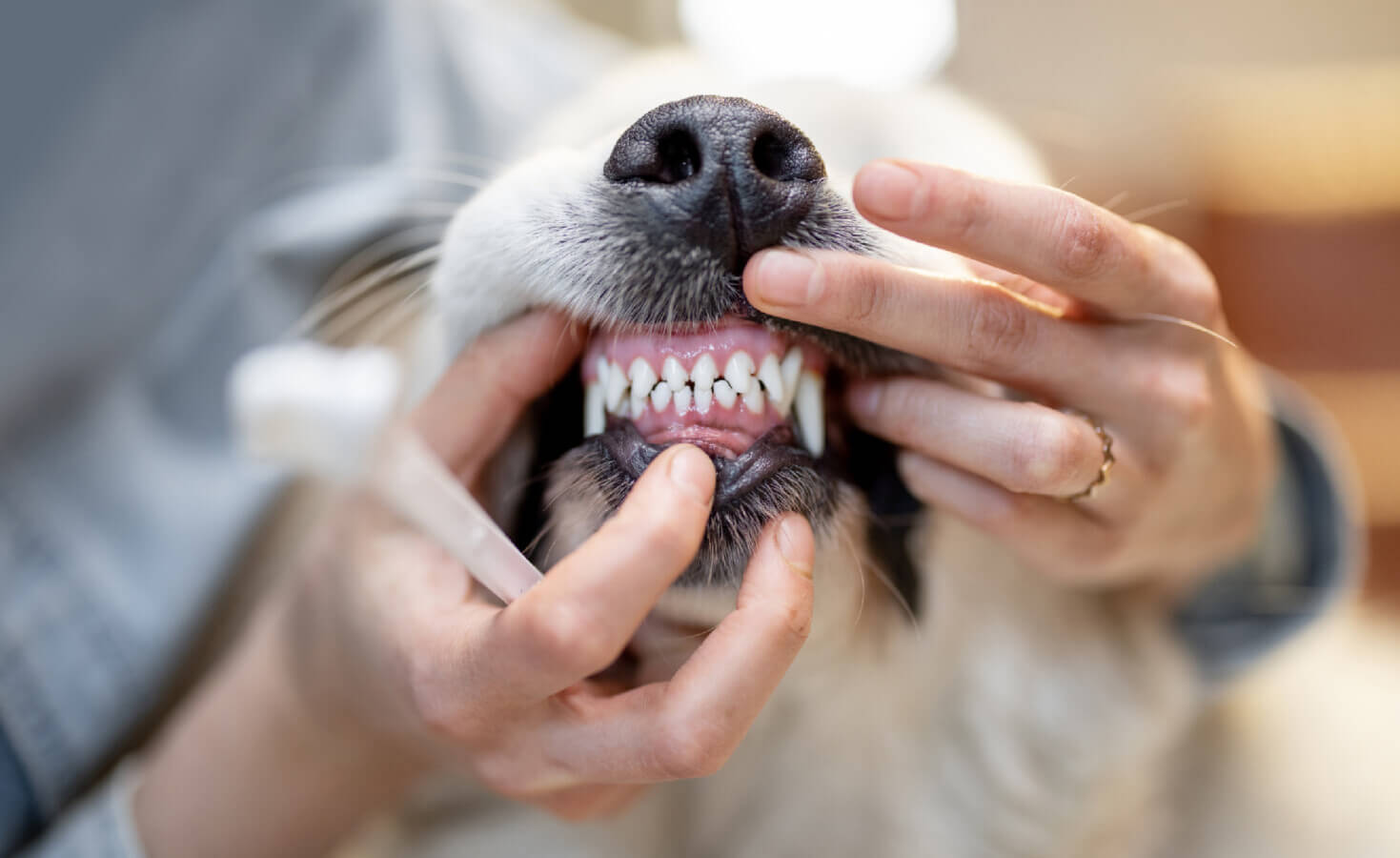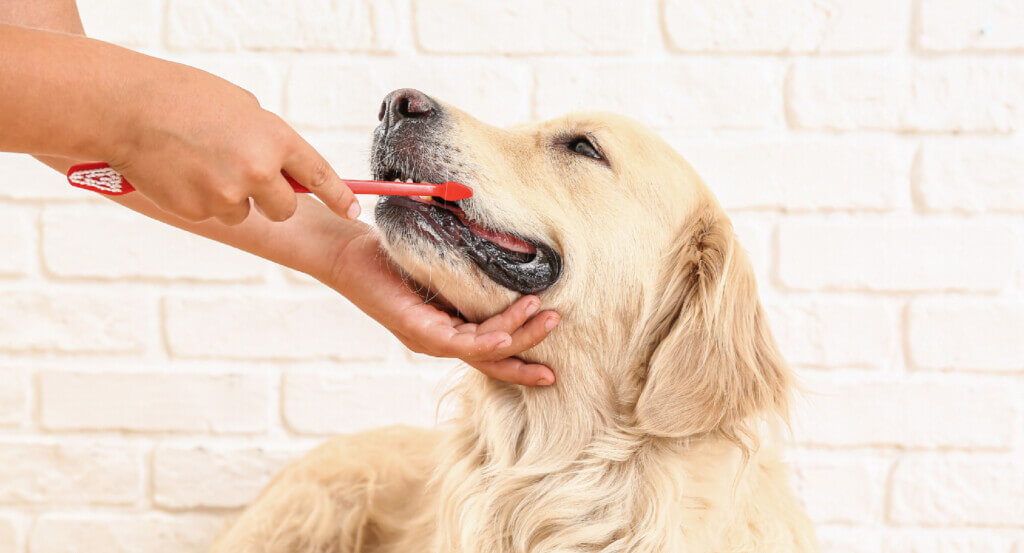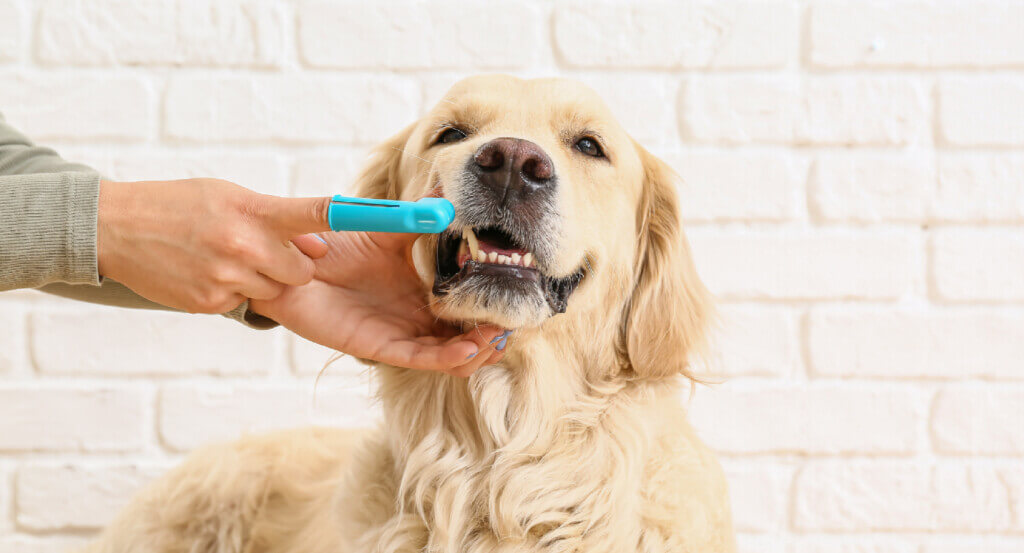How Often Should You Brush Your Dog’s Teeth?
February is National Pet Dental Health Month, and it’s the perfect time to think about your dog’s dental care routine. As a responsible pet parent, it’s crucial to prioritize their dental hygiene to prevent issues like plaque buildup, gum disease, and other health complications.
In this article, we’ll explore how often you should brush your dog’s teeth and share some helpful tips to make it easier. Keep reading for all the essentials on maintaining your pup’s dental health.

Benefits of Brushing Your Dog’s Teeth
Regularly brushing your dog’s teeth provides a wide range of benefits. These include preventing dental issues, promoting overall health, and reducing bad breath.
Prevents Dental Issues
Brushing your dog’s teeth does more than just keep their smile bright. It’s a crucial step in preventing dental disease, which can lead to painful periodontal issues down the line.
Regular tooth brushing removes plaque and tartar buildup that could otherwise cause gum disease and tooth decay. By maintaining a consistent routine, you help ensure your pet avoids the discomfort and potential health risks associated with poor oral hygiene.
Promotes Overall Health
Regular tooth brushing is also a critical step in maintaining your dog’s overall health. By removing plaque and preventing the buildup of tartar, you help ward off periodontal disease which can lead to more serious health problems if left untreated.
A clean mouth affects the whole body, reducing the risk of organ damage from bacteria entering the bloodstream through diseased gums.
Caring for your dog’s oral health is an investment in their wellbeing that pays off across their lifetime. As you establish a regular tooth brushing routine, you’re not just keeping their teeth clean but also supporting vital functions like heart and kidney health.
Reduces Bad Breath
Brushing your dog’s teeth is a great way to tackle bad breath. That unpleasant smell usually comes from bacteria accumulating in your pet’s mouth, and regular brushing helps get rid of it.
With fresher breath, snuggling and receiving kisses from your dog becomes even more enjoyable. Plus, it’s an easy addition to your daily pet care routine that goes a long way in maintaining your dog’s overall health.
How Often Should You Brush Your Dog’s Teeth?
Figuring out the right frequency for brushing your dog’s teeth is key to their oral and overall health. In this section, we’ll dive into how often you should pick up the toothbrush to maintain your dog’s dental hygiene.

Daily Brushing is Ideal
Regular and consistent brushing is key to maintaining your dog’s dental health. Daily brushing is ideal for preventing plaque buildup and reducing the risk of gum disease. This routine can also help in addressing any early signs of dental issues, promoting good oral hygiene, and preventing bad breath.
Incorporating daily teeth brushing will not only benefit your dog’s dental health but can also positively impact their overall wellbeing.
It’s important to establish a routine that works for both you and your pet where daily toothbrushing becomes an enjoyable part of their day. This practice helps them get used to the process while ensuring that their dental health remains a priority.
At Least Once Every 3 Days
It’s ideal to brush your pup’s teeth daily, but if that isn’t possible, aim for at least once every 3 days. This frequency helps prevent plaque buildup and keeps your dog’s teeth and gums healthy.
Brushing your dog’s teeth a few times a week also reduces the risk of periodontal disease and other dental issues. It may seem daunting at first, but with patience and positive reinforcement, you can make tooth brushing a positive experience for your furry friend.
Tips for Effective Teeth Brushing
Mastering the art of brushing your dog’s teeth can make a huge difference in their oral health. In this section, we’ll share some top tips for effective teeth brushing that will make the process smoother for both you and your furry companion.
Use Pet-Friendly Toothpaste
Choose a dog-friendly toothpaste to ensure the safety of your dog. Pet-friendly toothpaste is formulated with ingredients that are safe for dogs to swallow, unlike human toothpaste which can be harmful if ingested.
This will make brushing your dog’s teeth a more pleasant and worry-free experience for both you and your pup.
Be Gentle and Patient
Hold your dog securely and introduce the toothbrush gently into their mouth. With a calm, reassuring voice, slowly brush the outside surfaces of their teeth in short back-and-forth motions. Take care to be gentle along the gum line to avoid causing any discomfort.
While it may take time for your dog to get used to having their teeth brushed, patience is key. Start slow and offer lots of praise and maybe even a tasty treat after each session.
Over time, they’ll get more comfortable with the process and you can gradually work on brushing the inside surfaces as well.
Supplement With Dental Care Measures
To supplement your dog’s dental care, provide dental chews or chew toys designed to remove plaque and promote good dental health. These products help when your dog may not accept tooth brushing or as an additional measure alongside regular brushing.
Additionally, consider using pet-friendly water additives or oral gels to support clean teeth and a healthy mouth. When introducing any of these measures, always be patient and gentle until your dog accepts them seamlessly into their routine.
Feeding a healthy diet is also crucial to your dog’s overall wellbeing. A balanced diet can help prevent dental issues by providing essential nutrients for strong teeth and healthy gums. Check out our Earthborn Holistic dog food recipes for options that blend high-quality proteins, superfoods, and essential vitamins and minerals.
Schedule Regular Dental Checkups
To ensure your dog’s dental health is in great shape, schedule regular dental checkups. Annual visits to the veterinarian for a thorough dental examination and cleaning will help maintain your dog’s oral hygiene.
During these visits, your vet can identify any early signs of dental issues and provide appropriate treatment. Regular cleanings also prevent plaque buildup and potential tooth decay, promoting your dog’s overall wellbeing.
Additionally, these checkups allow the vet to assess your pet’s teeth, gums, and tongue for any abnormalities or signs of discomfort. By staying proactive with regular dental appointments, you can address any emerging problems before they escalate into serious health issues for your furry companion.

Key Takeaways
- Brush your dog’s teeth daily to prevent plaque buildup and reduce the risk of gum disease. If daily isn’t possible, aim for at least once every 3 days.
- Always use dog-specific toothpaste when cleaning your dog’s teeth, as human toothpaste can be harmful if ingested by pets.
- Incorporate dental checkups with your veterinarian into regular care to catch any early signs of dental problems and ensure a thorough cleaning.
- Pair brushing with additional dental care like chew toys, dental chews, water additives, or oral gels to further promote good oral hygiene in dogs.
- Be patient and gentle when introducing teeth brushing to your dog’s routine, securing them comfortably and praising them to create a positive experience.
Are You Brushing Your Dog’s Teeth Enough?
This National Dental Health Month, take a moment to focus on your dog’s dental hygiene. It’s the perfect opportunity to start or reinforce a regular teeth brushing routine and schedule a dental checkup with your vet. Keeping up with these practices can significantly impact your furry friend’s health, happiness, and longevity.




